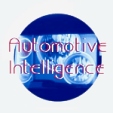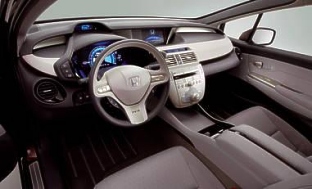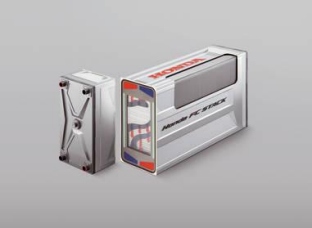
Automotive Intelligence - the web for automotive professionals and car enthusiasts
November 21, 2007
This Week:
-
Vanquish Launches Global Circuit of Luxury Automotive Navigational Tours
-
BMW Group DesignworksUSA designs iconic espresso machine for Starbucks
-
Toyota Unveils All-New 2008 Sequoia At 2007 Los Angeles Auto Show
-
Los Angeles Design Challenge: The Mercedes-Benz SilverFlow can take on a wide variety of forms
-
Nissan Introduces All-New Nissan GT-R Supercar and 2009 Murano Crossover at L.A. Auto Show
-
The space up! Blue - Clean Drive Revolution “Made in Germany”
-
New 2009 Chrysler Aspen HEMI® Hybrid and Dodge Durango HEMI Hybrid
© 1998 - 2007
Copyright &
Disclaimer
Automotive Intelligence,
www.autointell.com
All Rights Reserved .
For questions please contact
editor@autointell.net
|
Honda Debuts All-New FCX Clarity Advanced Fuel Cell Vehicle Limited marketing to begin next summer
FCX Clarity LOS ANGELES - Honda unveiled the FCX Clarity fuel cell vehicle at the Los Angeles International Auto Show, announcing plans to begin limited retail marketing of the vehicle in summer 2008. The FCX Clarity is a next-generation, zero-emission, hydrogen-powered fuel cell vehicle based on an entirely new Honda V Flow fuel cell platform, and powered by the highly compact, efficient and powerful Honda V Flow fuel cell stack. Featuring tremendous improvements to driving range, power, weight and efficiency - and boasting a low-slung, dynamic and sophisticated appearance, previously unachievable in a fuel cell vehicle - the FCX Clarity marks the significant progress Honda continues to make in advancing the real-world performance and appeal of the hydrogen-powered fuel cell car. |
|
|
|
Honda plans to lease the FCX Clarity to a limited number of retail consumers in Southern California, U.S., with the first delivery taking place in summer 2008. Full details of the lease programme will be set closer to launch, but current plans are for a three-year lease term with a price of $600 per month, including maintenance and collision insurance. |

How the FCX Clarity got its name
Honda chose this name to express the idea that the company is creating a fuel cell vehicle that will offer a clear solution to the challenges of the future, helping society achieve sustainable mobility.

How the FCX Clarity works
The FCX Clarity utilises Honda's V Flow stack in combination with a new compact and efficient lithium ion battery pack and a single hydrogen storage tank to power the vehicle's electric drive motor. The fuel cell stack operates as the vehicle's main power source. Hydrogen combines with atmospheric oxygen in the fuel cell stack, where energy from the reaction is converted into electric power used to propel the vehicle. Additional energy is also generated through the capture of kinetic energy from vehicle braking and deceleration (known as regenerative braking), which is stored along with surplus energy from the fuel cell in the lithium ion battery pack, and is used to supplement power from the fuel cell, when needed. The vehicle's only emission is water.
The FCX Clarity's only emission is water. CO2 emissions related to the production of

hydrogen vary by source; however, well-to-wheel CO2 emissions using hydrogen reformed from natural gas - the most widely used method of production today - are less than half that of a conventional petrol vehicle. With the production of hydrogen from water by electrolysis, CO2 emissions can be further reduced and ultimately approach zero if the electricity is generated from sustainable sources, such as solar, wind, hydro and wave power.
In the area of solar technology, Honda has developed its own solar cells, with half the CO2 emissions in the production stage compared to conventional crystalline silicon cells; and has begun mass-production and retail sales of this technology in Japan for both commercial and residential use. These panels are also used to generate electricity for the Torrance R&D refueling station.
Photos: Honda
(November 14, 2007)
| .
Homepage News Companies Management Publications Events Guestbook Search . |
